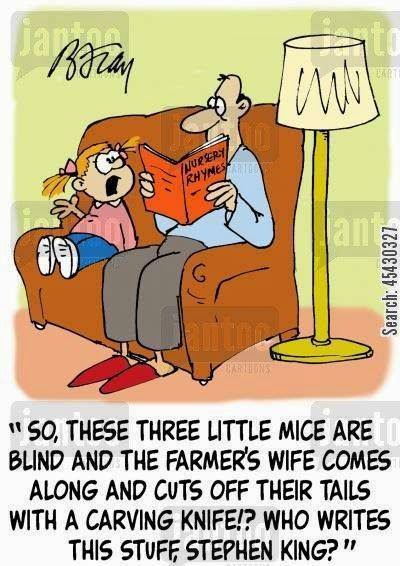
by Brandon Engel
Valentine’s Day and Misery
While Stephen King is most widely known for his horror stories, in his 1987 novel
Misery, themes of romance prevail. Not romance in any conventional sense, however – it concerns the "romantic" nature of the relationship between an author and his writing. And beyond merely that, it also explores the ties that bind avid readers to works of pulp literature. King has often written about writers, and Misery, much like The Shining, offers readers an intimate glimpse behind the tortuous exercise of converting inspiration into a meaningful end product. Utilizing familiar elements of horror, he reveals the pain inherent to the writing process.
Misery was inspired by a dream King had on a plane flight to England, concerning a popular writer who fell victim to a psychotic fan. Waking up, he wrote down a description of the character that would later become "Annie" on a napkin. King centers the primary focus of the novel on Paul Sheldon, the author of a best-selling Victorian romance series about a character named Misery Chastain. When Sheldon is rescued by Annie Wilkes from a car crash, he slowly finds that she is sickly obsessed with his work and will do anything to have the recently killed-off protagonist revived. Even if it means sacrificing Paul himself.
The novel was adapted into a film in 1990 by Rob Reiner and starred James Caan and
American Horror Story star
Kathy Bates (who would later star in another King adaptation: Dolores Claiborne). We follow Paul (Caan) as he rewrites this story while being tortured by the seemingly-harmless Annie. King shows us the literal blood, sweat, and tears that had been put into Paul’s writing – making it the most meaningful piece in his career as an author. The relationship between the author and the writer is one that is carefully portrayed in Misery. King shows us that this pain is almost necessary to succeed, and sometimes, that pain itself provokes a twisted and perverse sense of pleasure.
Extreme fandom is personified in Annie (Bates), showing us just how obsessive certain individuals can be. Her crazed eyes and apparent insanity is enough to have Paul terrified for his life. Although Annie was just one single fictional woman, she had paranoid viewers rethinking their safety and security. The threat of other "Annie" types was enough to provoke some viewers to take dramatic action, turning to
Charlotte ADT Security or
Chicago Security Doctors to protect themselves. As we see Annie torture Paul for the fun of it, we recognize characteristics in her that we've seen in other people (or even ourselves). She isn't that nuts. She just loves the characters in her favorite stories as though they were her own flesh and blood. She is dependent on these novels as a way to escape her own lonely life, and like any fan out of touch with reality, she reacts in devastation when she learns that a beloved character has died. To her, these are real people - and she wants her protagonist back. Though perhaps not to this level, Though perhaps not to this level,
She is dependent on these novels as a way to escape her own lonely life and like any crazed fan, Annie reacts in devastation when she finds out that a beloved character dies. To her, these are real people and she wants her protagonist back. Though perhaps not to this level,
we have seen this before in crazed fans, who believe they know what’s best for their particular franchise.
The Annie-Paul duo takes our breath away in this dynamic relationship of abuser and abused. Bates skillfully portrays a sweet and caring individual who has the capacity to turn into a woman scorned, once she has the proper reason to enact revenge. Paul is a departure from Caan’s previous performances, but he was definitely able to portray the controlled, terrified victim who seemed to have no chance at being saved. The film received mostly
positive reviews and was seen as one of King’s best film adaptations to date. Perhaps this is because Misery exceeds generic horror. It isn't about in-your-face scares or supernatural beings- the real horror is within everyday people.


